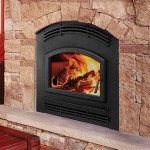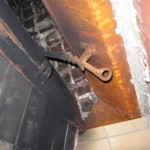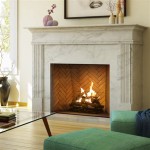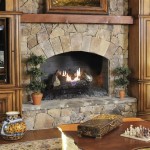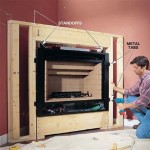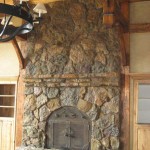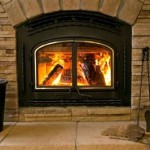The Enduring Appeal and Practical Considerations of Wooden Beam Fireplace Mantels
A wooden beam fireplace mantel offers a compelling blend of rustic charm and timeless elegance, making it a popular focal point for homes across diverse architectural styles. From farmhouse chic to modern minimalist, a well-chosen wooden mantel can significantly enhance the character of a living space. However, selecting and installing a wooden beam mantel requires careful consideration of several factors, including wood species, size, style, installation methods, and fire safety regulations.
The use of wood as a decorative element around fireplaces dates back centuries. Originally, mantels served a practical purpose, preventing soot and embers from marking the wall above the fire. Over time, they evolved into elaborate architectural features, showcasing craftsmanship and status. While modern fireplaces are often enclosed and vent efficiently, the mantelpiece retains its significance as an aesthetic centerpiece, a place to display treasured objects, and a visual anchor for the room.
Wood Species: Choosing the Right Material for Your Wooden Beam Mantel
The choice of wood species is critical for both aesthetic appeal and long-term durability. Each type of wood possesses unique characteristics in terms of grain pattern, color, density, and resistance to warping and cracking. Common choices for wooden beam mantels include:
- Reclaimed Wood: Sourced from old barns, factories, or other structures, reclaimed wood offers a unique history and rustic character. It often features weathered textures, nail holes, and saw marks that add to its visual appeal. Reclaimed wood is generally considered environmentally friendly, as it repurposes existing materials. However, it may require careful cleaning and treatment to remove debris and prevent insect infestation.
- Oak: Known for its strength and durability, oak is a classic choice for wooden mantels. It features a prominent grain pattern and a warm, golden-brown color that deepens over time. Oak is resistant to rot and decay, making it a suitable option for both interior and exterior applications.
- Pine: A softer and more affordable option, pine is easy to work with and accepts stains and paints readily. It has a lighter color and a less pronounced grain pattern than oak. Pine is best suited for situations where a more casual or painted finish is desired. However, it is more susceptible to dents and scratches than hardwoods.
- Walnut: A premium hardwood with a rich, dark brown color and elegant grain pattern, walnut is a sophisticated choice for wooden mantels. It is strong, durable, and resistant to warping, making it a long-lasting investment. Walnut is often used in high-end homes and adds a touch of luxury to any space.
- Fir: A softwood commonly used for construction and decorative purposes, fir offers a balance of affordability and aesthetic appeal. It has a relatively straight grain and a light color that can be stained or painted to match any décor. Fir is a good choice for mantels in modern or transitional homes.
Ultimately, the best wood species for a wooden beam mantel depends on individual preferences, budget, and the overall style of the home. It is advisable to consult with a woodworking professional to discuss the pros and cons of different wood species and select the most appropriate option.
Sizing and Styling: Achieving Visual Harmony
The size and style of a wooden beam mantel should be carefully considered to ensure it complements the fireplace and the surrounding room. A mantel that is too large can overwhelm the space, while one that is too small may appear insignificant. The following factors should be taken into account:
- Fireplace Opening: The mantel should be wider than the fireplace opening to create a visual balance. A general rule of thumb is to extend the mantel at least 6 inches on each side of the opening.
- Room Dimensions: The size of the room should also influence the size of the mantel. In larger rooms, a longer and wider mantel can make a more significant impact. In smaller rooms, a more compact mantel may be more appropriate.
- Ceiling Height: The height of the ceiling should be considered when determining the vertical placement of the mantel. In rooms with high ceilings, the mantel can be positioned higher up, while in rooms with low ceilings, it should be placed closer to the fireplace opening.
- Style of the Home: The style of the mantel should complement the overall architectural style of the home. A rustic beam mantel may be suitable for a farmhouse or cottage-style home, while a sleek, modern mantel may be more appropriate for a contemporary space.
Styling the mantel is another important aspect of creating a visually appealing focal point. Avoid cluttering the mantel with too many items. Instead, choose a few carefully selected objects that complement the wood and the overall décor of the room. Consider incorporating items of varying heights and textures to create visual interest. Paintings, sculptures, candles, and plants are all popular choices for mantel décor.
Installation and Fire Safety: Ensuring a Safe and Durable Mantel
Proper installation is crucial for the safety and longevity of a wooden beam mantel. The mantel must be securely attached to the wall to prevent it from falling. The installation method will depend on the weight of the mantel and the type of wall construction.
Several methods can be employed for installation:
- French Cleat: A French cleat system involves attaching a beveled piece of wood to the back of the mantel and a corresponding piece to the wall. The mantel then slides onto the cleat, providing a secure and hidden mounting solution. This method is suitable for mantels of moderate weight.
- Lag Bolts: For heavier mantels, lag bolts can be used to directly attach the mantel to the wall studs. This method requires pre-drilling holes in the mantel and aligning them with the studs.
- Steel Brackets: Steel brackets can be used to provide additional support for the mantel. The brackets are attached to the wall and then concealed within the mantel.
Fire safety is paramount when installing a wooden mantel. Building codes typically specify minimum clearances between the mantel and the fireplace opening to prevent the wood from igniting. These clearances vary depending on the type of fireplace and the local building codes. It is essential to consult with a qualified building inspector or contractor to ensure that the installation meets all applicable safety regulations.
Furthermore, consider applying a fire-retardant coating to the wood mantel. These coatings can help slow down the spread of flames in the event of a fire. Choose a fire-retardant coating that is specifically designed for use on wood and that meets all applicable safety standards.
Regular maintenance is also important for ensuring the longevity of a wooden beam mantel. Dust the mantel regularly to prevent the buildup of dirt and debris. If the mantel is exposed to direct sunlight, consider applying a UV-resistant finish to prevent fading. Inspect the mantel periodically for signs of damage, such as cracks or warping, and repair any damage promptly.

Wood Beam Mantel Shelf 48 72 Floating Fireplace Nederland

Rustic Reclaimed Fireplace Mantel Century Old Wood Beam Personalized Sizes Shades With Corbels Real Nederland

Fireplace Mantel Barn Beam Wooden 8 X Rough Hewn Rustic Wood

Quick Wood Beam Mantel Diy Project Barron Designs

Simple European Farmhouse Barn Beam Fireplace Mantel Makeover Open Doors Hearts

Diy Wood Beam Mantel

Why Wooden Fireplace Mantels Are Simply The Best

Rough Sawn Reclaimed Wood Faux Beam Mantels

Distressed Poplar Beam Fireplace Mantel Wood Mantle Home Tile Surround

72 Floating Wood Beam Fireplace Mantel Shelf Aowga Woodworks

